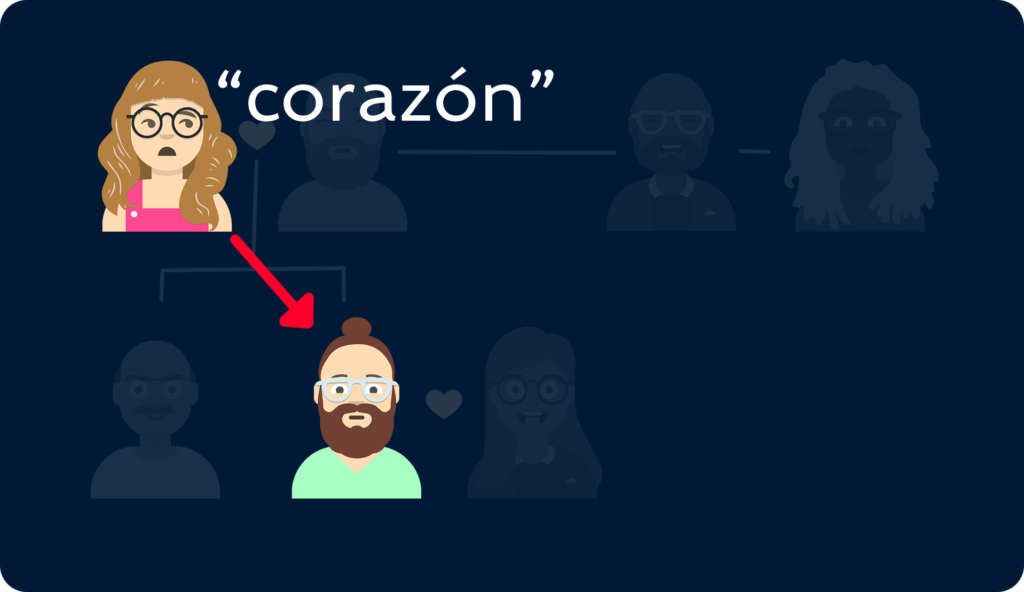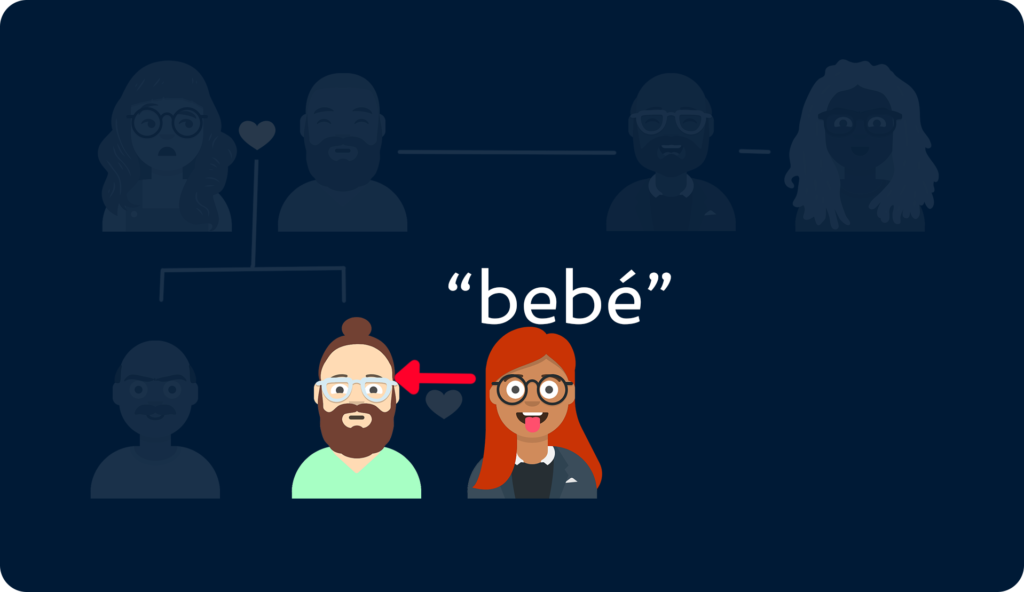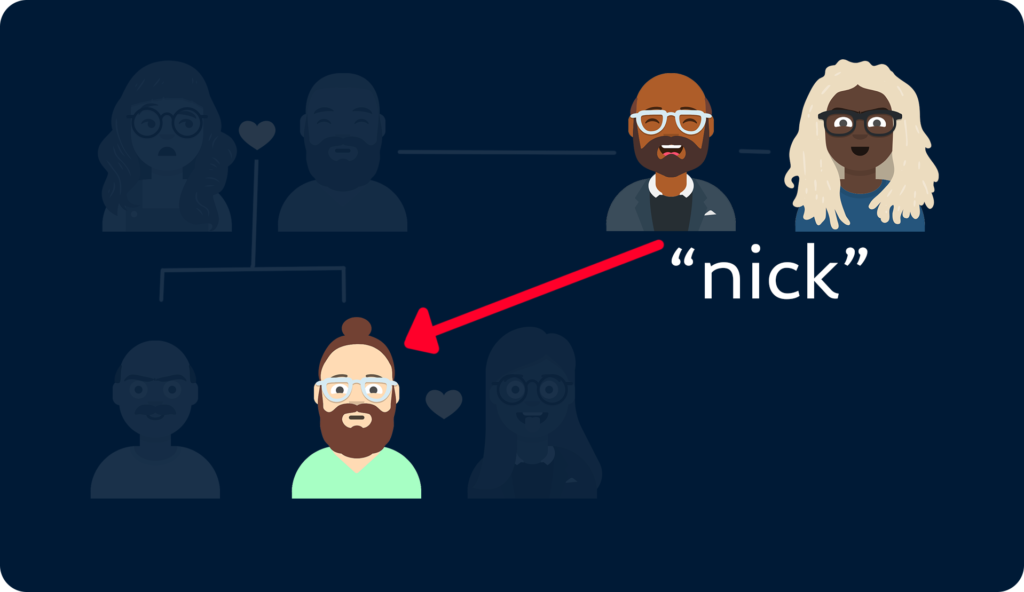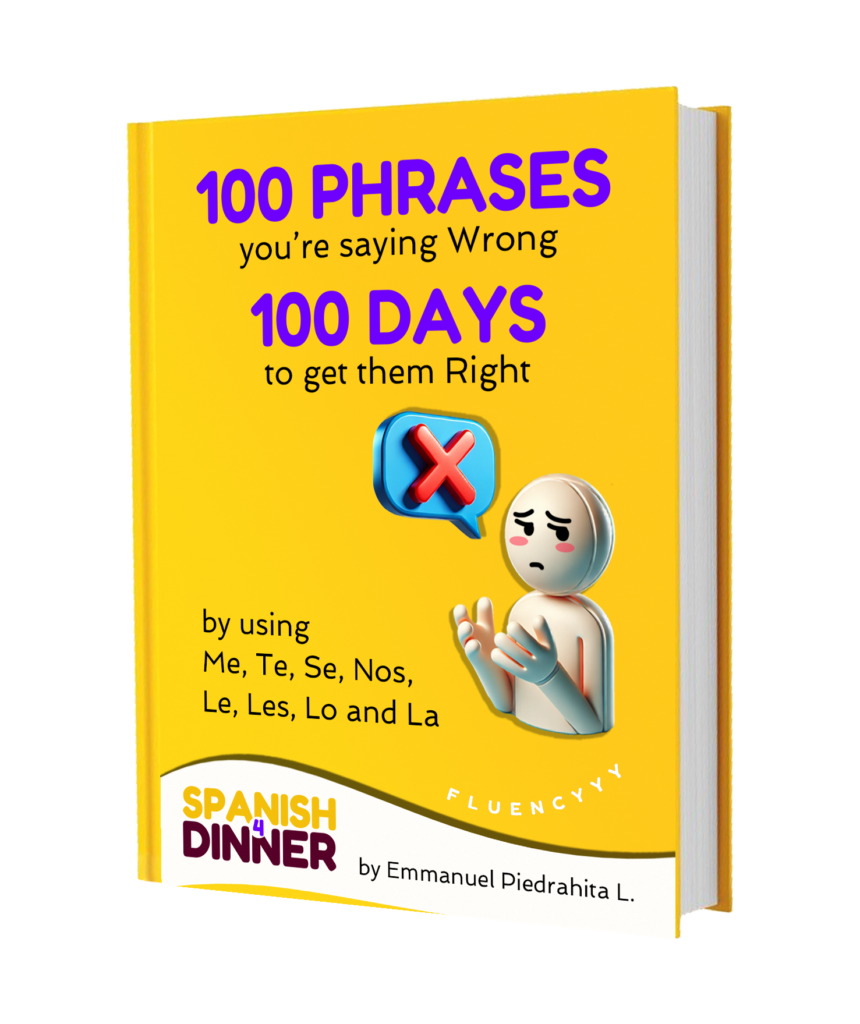‘Me llamo’ vs ‘Se llama’ vs ‘Me llama’
What will you learn in this blog?
🟢How to say your name in Spanish
🟢How to introduce your family using ‘se llama’ and ‘se llaman’
🟢How to express “I go by this name” or “People call me this” using ‘me llama’ and ‘me llaman’
Throughout this blog, we’ll explore four very useful forms of the verb “llamar” (to call):
🔹Me llamo Nicolás– I’m called Nicolas
🔹Se llama Carolina – She’s called Carolina
🔹Ella me llama Nico– She calls me Nico
🔹Mis amigos me llaman Nick – My friends call me Nick
How to introduce your family in Spanish using ‘se llama’ and ‘se llaman’

“This is me, Nicolas, and this is my crazy family.”
Este soy yo, Nicolás, y esta es mi familia loca.

“This is my mom, that’s called Carolina.”
Esta es mi mamá, que se llama Carolina.

“This is my dad, that’s called Alfonso.”
Este es mi papá, que se llama Alfonso.

“This is my wife, that’s called Clara.”
Esta es mi esposa, que se llama Clara.

“And this is my brother, that’s called Samuel.”
Y este es mi hermano, que se llama Samuel.

“These are my “uncles”, that are called Alex and Julie.”
Ellos son mis tíos, que se llaman Alex y Julie.
✅“Este es mi hermano, que se llama Samuel“– This is my brother that’s called Samuel.
✅“Este es mi hermano, Samuel” – This is my brother, Samuel.
If I were showing my family photos to a friend, I’d feel comfortable using either form. And if se llama (it means ‘is called’) sounds strange in English, don’t worry — in Spanish, it’s the most common and natural way to say it.
How to say what others call you — or the name you go by in Spanish

My mom calls me “sweetheart”.
Mi madre me llama “corazón”.

My dad calls me “son”.
Mi papá me llama “hijo”.

My wife calls me “dear”.
Mi esposa me llama “querido”.

My brother calls me “nico”.
Mi hermano me llama “nico”.

My “uncles ” call me “nick”.
Mis tíos me llaman “nick”.
If you’re curious about how to use me llama and where it comes from, learn How to use ‘me’ and ‘a mí’


Still stuck in translator mode when speaking Spanish? Time to upgrade!
Our brand new course is here to help you use pronouns like me, te, nos, le, les, lo, and la with confidence — and sound way more fluent.

🎯 Want to use Spanish object pronouns like a true native speaker?
At Spanish4dinner, we’ve got you covered when it comes to mastering Spanish pronouns.

Grab your free 100 phrases you’re saying wrong 100 days to get them right eBook and start building a habit that will make your Spanish sound more natural—just like a local!